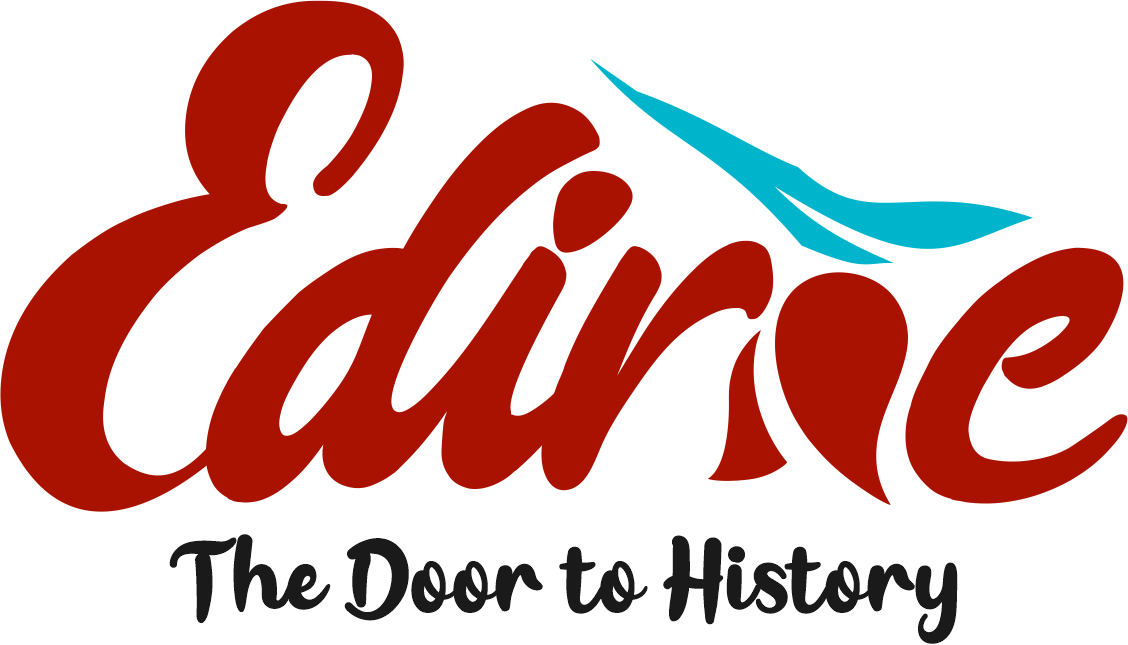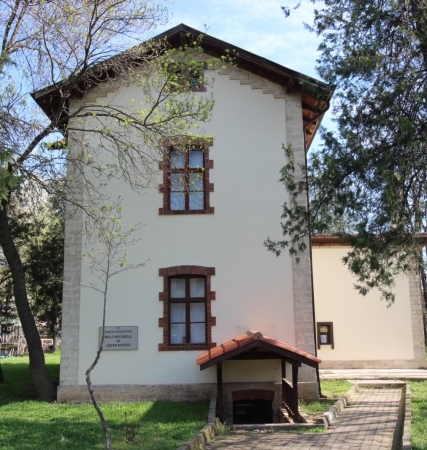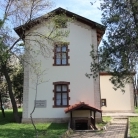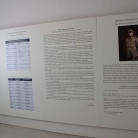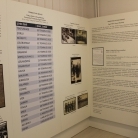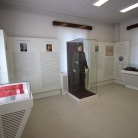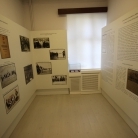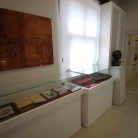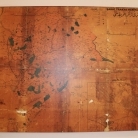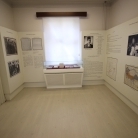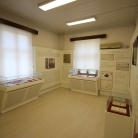National Struggle and Lausanne Museum
The idea of establishing the Lausanne Museum within the Faculty of Fine Arts, Karaağaç Campus, Trakya University, first emerged in 1996 and took shape with the definitions of "Lausanne Monument", "Lausanne Square" and "Lausanne Museum". The erection of the Lausanne Monument in the campus where the museum is located was taken with the decision of the University Senate dated 27.11.1996 and numbered 7, and as a justification, it was emphasised that "the inclusion of the Karaağaç region on the Greek side of the Evros River to the territory of the Republic as War Compensation" with the Lausanne Peace Treaty. The Lausanne Monument and Square was completed in 110 days and inaugurated by President Süleyman Demirel on 19 July 1998.
The work on the establishment of the museum was carried out by the Department of Library and Documentation. One room of the "Lausanne Museum", where books, documents and materials related to the Treaty of Lausanne are exhibited, has been arranged with books, documents and some materials donated by the "İnönü Foundation" and one room by the "Foundation for the Establishment and Development of Historical Research and Documentation Centres". With the letter of the Ministry of Culture dated 28.08.2000 and numbered 9658, the museum gained its official identity.
After its establishment, especially after the transfer of the Rectorate units from Karaağaç to the Balkan campus, "due to the need for space within the Karaağaç campus" The museum has been relocated several times. The first relocation took place in the building that once served as Edirne station and was the work of Architect Kemalettin.
The museum was relocated once again at the end of 2014 due to the increase in the usage capacity of the Faculty of Fine Arts, and the items in the museum were moved to the building allocated for the current National Struggle and Lausanne Museum. As a result of the work carried out by the Trakya University Museums Executive Board under the coordination of the Rectorate, the name of the existing museum was changed to "National Struggle and Lausanne Museum" in accordance with the Senate Decision dated January 29, 2015. Depending on the scenario updated with the name change, the museum was enriched in terms of information, documents and materials, and was inaugurated on Tuesday, April 19, 2016 with its renewed display-disposition. As a result, the idea of establishing the National Struggle Museum, which emerged in late 2014, turned into the "National Struggle and Lausanne Museum" in early 2015, and after a long period of work, it was finalized with the opening in 2016.
Exhibition plan of the museum;
Entrance Floor: National Struggle
Corridor Chronology of the National Struggle, maps of the Armistice of Mudros, the Treaty of Sèvres and Lausanne displayed together.
Room A: Biographies; It consists of the life stories and pictures of some of the people who participated in the National Struggle in Thrace, who were the founders of the Thrace Pasaeli Müdafa'a-i Hukuk-ı Osmaniye Cemiyeti and who served. These people are as follows: M. Şevket Dağdevirenzade, Kasım Yolageldili, M. Şeref Aykut, Faik Kaltakkıran, Cafer Tayyar Eğilmez, Şevket Ödül. Information, documents and materials related to the occupation of the Thracian railways map and stations first by French and then by Greek soldiers, the establishment of the Thracian Pashaeli Association and its organization in the region.
Room B: Information, documents and materials about Edirne rallies during the National Struggle, the affiliation of the Thrace Pashaeli Association and Thrace to the Anatolian and Rumelia Mudafa'a-i Hukuk Association, the seizure of the provincial administration by the Association, Thrace Congresses (Lüleburgaz and Edirne Congress), information and documents about Edirne newspapers during the National Struggle.
Room C: Some measures taken against the occupation of Thrace, the occupation of Thrace by Greek troops and the captivity of Cafer Tayyar Pasha, correspondence on Greek atrocities and protests during the occupation period, memories of the occupation period, letters, documents and pictures about those who were exiled.
Room D: The road to the liberation of Thrace; the Victory in Anatolia, those who served in the National Struggle, the Thracian Militia, Mustafa Kemal Pasha's belief in and contribution to the winning of the Thracian cause, the Mudanya Armistice and the preparations for the evacuation of Thrace are explained with documents and pictures.
First Floor: Liberation of Thrace and Lausanne
Corridor Lausanne Chronology, Edirne Province map and 1914 population information.
Room F: Liberation of Thrace; information about Refet Bele, Commander of Thrace, and Şakir Kesebir, Governor of Edirne; information, documents and pictures about the Thracian gendarmerie organization, administrative officials and the handover of Thrace to the Turks, and in particular the events of the liberation of Edirne on November 24-25, 1922.
Room G: Lausanne Conference and Peace Treaty; Includes pictures of the Lausanne delegation and officials, the Instructions and authorization documents given to the Lausanne Delegation, pictures of the Conference building and halls, signature documents, examples of correspondence between the delegation and Ankara, provisions and maps about the Thracian border and demilitarized areas according to the Treaty.
Room H: Pictures and cartoons from the Lausanne Conference, the Karaağaç Protocol of the Lausanne Peace Treaty, railway transportation and the use of the Karaağaç station, and documents and pictures of the handover of Karaağaç to the Turks on September 15, 1923.
It welcomes its visitors as a private museum affiliated to Trakya University.
Address : Historical Station Building, Karaağaç Mahallesi, İstasyon Caddesi, No: 1
Telephone : (0284) 236 27 85
E-mail : millimucvelozanmuzesi.trakya.edu.tr
Visiting Days : Open to Visitors on all days except Monday.
Visiting Hours : Summer - Winter: 09.00-17.00
Fee : Free of charge
MuseumCard : Invalid

